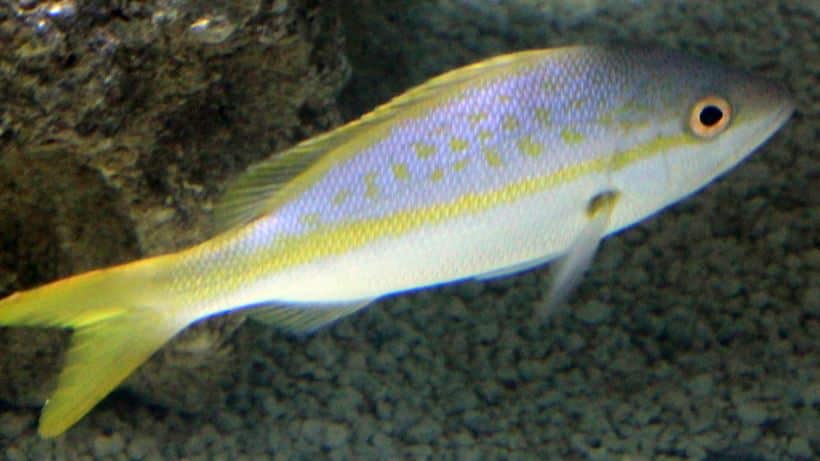Yellowtail fishing in Florida is a thrilling and rewarding experience for anglers seeking the challenge of reeling in these feisty and delicious fish. Known for their speed, agility, and delectable taste, yellowtail snapper are a popular target for both novice and seasoned anglers. In this comprehensive guide, we’ll delve into the various yellowtail fishing techniques, equipment essentials, prime locations, and best practices to ensure a successful and enjoyable fishing adventure in the Sunshine State.
Understanding Yellowtail Snapper:
Before we dive into the techniques, it’s crucial to understand the behavior and habitat of yellowtail snapper. These fish are commonly found in the warm, tropical waters of Florida, often near reefs, wrecks, and other underwater structures. Yellowtail snapper are known for their distinctive yellow tails and pinkish bodies, and they typically weigh between one to three pounds, although larger specimens can be caught.
Best Time and Locations:
Yellowtail snapper can be found year-round in Florida waters, but certain times and locations are more productive for anglers. In the summer months, these fish tend to move closer to the surface and are commonly found in shallower waters. Prime locations for yellowtail fishing include the Florida Keys, the Gulf of Mexico, and the Atlantic coast, especially around reefs and wrecks.
Essential Equipment:
- Rods and Reels: Selecting the right rod and reel combo is crucial for yellowtail fishing success. A medium to medium-heavy spinning rod in the 7 to 8-foot range paired with a quality spinning reel with a smooth drag system is ideal. The reel should be spooled with 10 to 20-pound test monofilament or fluorocarbon line.
- Terminal Tackle: Use a light fluorocarbon leader, typically in the 12 to 20-pound test range, to increase your chances of getting bites. Yellowtail snapper have keen eyesight, so a stealthy presentation is essential. Small hooks in the size range of 1/0 to 3/0, along with small egg sinkers or split shots, are commonly used in yellowtail fishing rigs.
- Baits and Lures: Yellowtail snapper are opportunistic feeders, and they can be enticed with various baits and lures. Live shrimp, pilchards, ballyhoo, and small squid are excellent natural baits. Artificial lures such as small jigs and soft plastics can also be effective, especially when targeting larger yellowtail in deeper water.
Yellowtail Fishing Techniques:
- Chumming: Chumming is a highly effective technique for attracting yellowtail snapper. It involves creating a steady stream of scent and small bait particles in the water to entice the fish. Use a combination of crushed shrimp, fish parts, and commercial chum products to create a slick near your fishing spot.
- Drift Fishing: Drift fishing is a popular method for covering a larger area and locating schools of yellowtail snapper. Drift along reefs and wrecks while presenting your baits at different depths until you find the right zone. Keep an eye on your depth finder to identify the depth at which yellowtail are holding.
- Anchor Fishing: Once you’ve located a productive area, anchoring your boat allows for precise bait placement. Drop anchor up-current from the structure, and deploy your baits to drift back toward the targeted zone. This technique is especially effective when fishing over specific spots like wrecks or rock piles.
- Light Tackle and Finesse Fishing: Yellowtail snapper can be finicky, requiring a finesse approach. Use light tackle to provide a more natural presentation. Pay attention to subtle bites and be prepared to adjust your technique based on the fish’s behavior.
- Night Fishing: Yellowtail snapper are known to be more active at night. Fishing under the cover of darkness can yield impressive results. Use small glow-in-the-dark lures or add light sticks to your rigs to attract yellowtail in low-light conditions.
Safety and Conservation:
Before heading out on your yellowtail fishing expedition, it’s important to prioritize safety and conservation. Ensure your boat is in good condition, carry all necessary safety equipment, and be aware of weather conditions. Respect fishing regulations, adhere to size and bag limits, and release undersized or non-target species responsibly.
Conclusion:
Mastering yellowtail fishing techniques in Florida requires a combination of knowledge, skill, and the right equipment. By understanding the behavior of yellowtail snapper, choosing the appropriate gear, and employing effective fishing techniques, you can enhance your chances of a successful and enjoyable fishing experience. Whether you prefer drift fishing over expansive reefs or anchor fishing near wrecks, the diverse and abundant waters of Florida offer numerous opportunities for anglers to test their skills and savor the thrill of yellowtail fishing.

